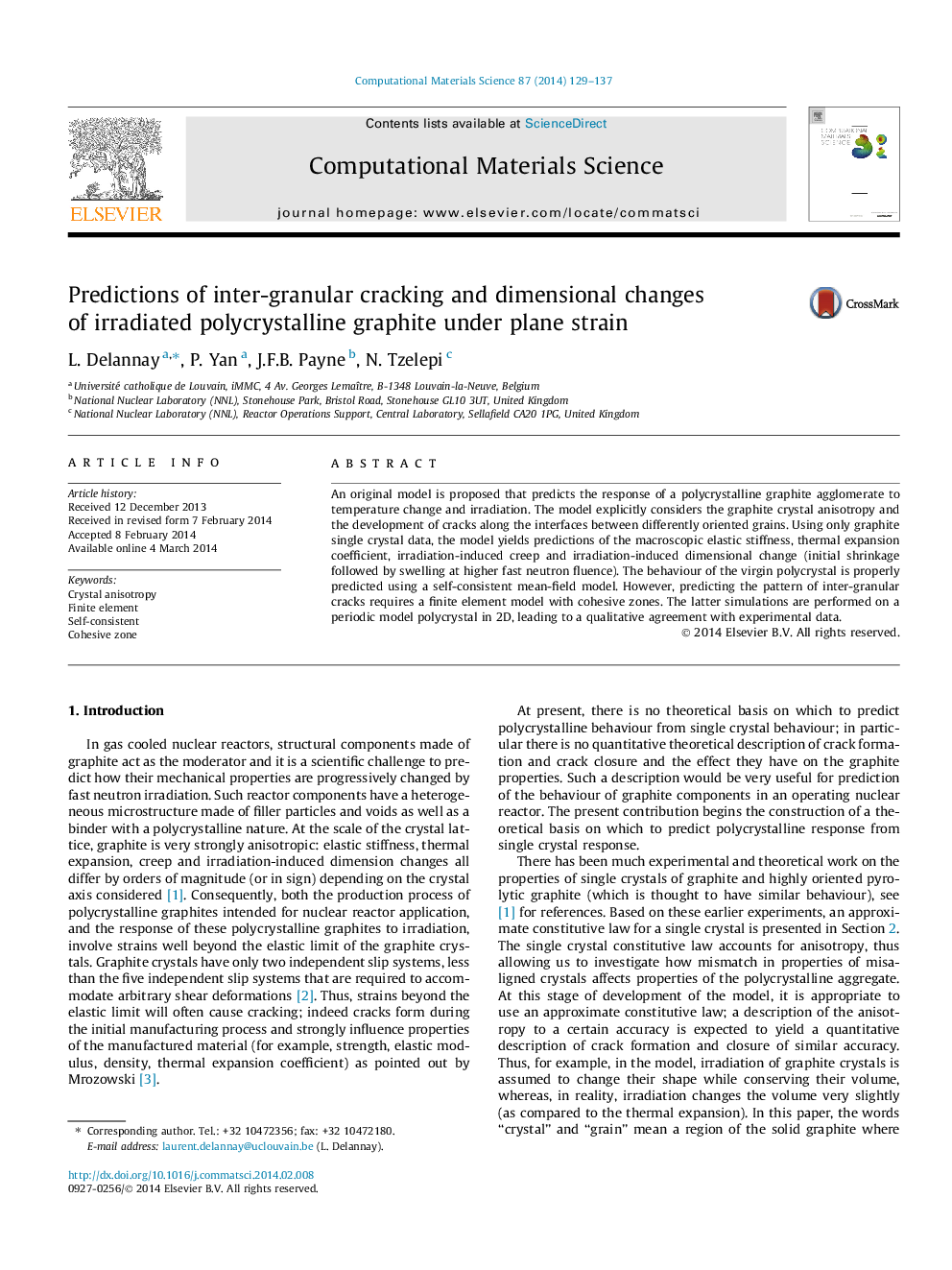| Article ID | Journal | Published Year | Pages | File Type |
|---|---|---|---|---|
| 1560550 | Computational Materials Science | 2014 | 9 Pages |
Abstract
An original model is proposed that predicts the response of a polycrystalline graphite agglomerate to temperature change and irradiation. The model explicitly considers the graphite crystal anisotropy and the development of cracks along the interfaces between differently oriented grains. Using only graphite single crystal data, the model yields predictions of the macroscopic elastic stiffness, thermal expansion coefficient, irradiation-induced creep and irradiation-induced dimensional change (initial shrinkage followed by swelling at higher fast neutron fluence). The behaviour of the virgin polycrystal is properly predicted using a self-consistent mean-field model. However, predicting the pattern of inter-granular cracks requires a finite element model with cohesive zones. The latter simulations are performed on a periodic model polycrystal in 2D, leading to a qualitative agreement with experimental data.
Related Topics
Physical Sciences and Engineering
Engineering
Computational Mechanics
Authors
L. Delannay, P. Yan, J.F.B. Payne, N. Tzelepi,
